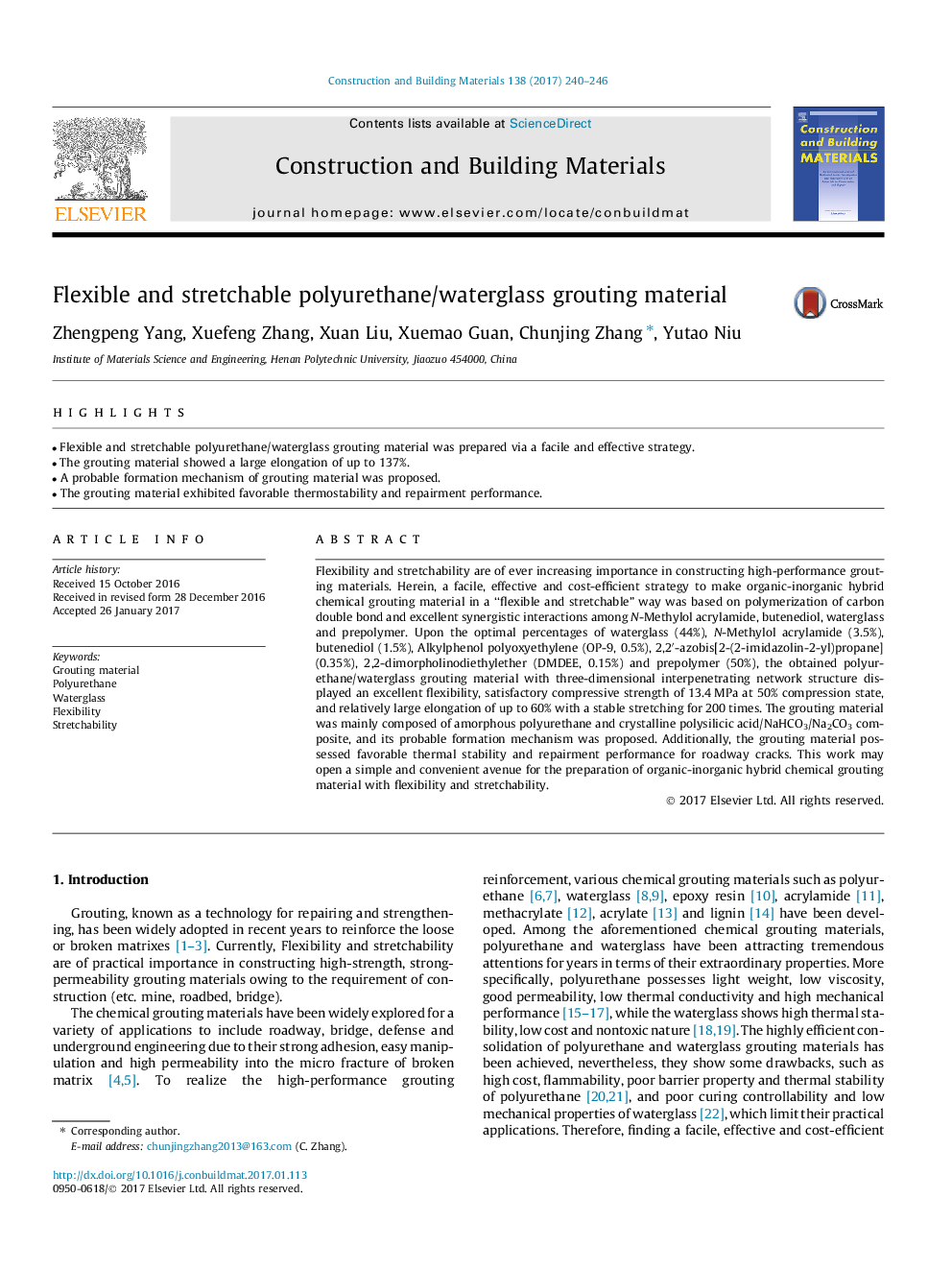| Article ID | Journal | Published Year | Pages | File Type |
|---|---|---|---|---|
| 4913713 | Construction and Building Materials | 2017 | 7 Pages |
Abstract
Flexibility and stretchability are of ever increasing importance in constructing high-performance grouting materials. Herein, a facile, effective and cost-efficient strategy to make organic-inorganic hybrid chemical grouting material in a “flexible and stretchable” way was based on polymerization of carbon double bond and excellent synergistic interactions among N-Methylol acrylamide, butenediol, waterglass and prepolymer. Upon the optimal percentages of waterglass (44%), N-Methylol acrylamide (3.5%), butenediol (1.5%), Alkylphenol polyoxyethylene (OP-9, 0.5%), 2,2â²-azobis[2-(2-imidazolin-2-yl)propane] (0.35%), 2,2-dimorpholinodiethylether (DMDEE, 0.15%) and prepolymer (50%), the obtained polyurethane/waterglass grouting material with three-dimensional interpenetrating network structure displayed an excellent flexibility, satisfactory compressive strength of 13.4Â MPa at 50% compression state, and relatively large elongation of up to 60% with a stable stretching for 200Â times. The grouting material was mainly composed of amorphous polyurethane and crystalline polysilicic acid/NaHCO3/Na2CO3 composite, and its probable formation mechanism was proposed. Additionally, the grouting material possessed favorable thermal stability and repairment performance for roadway cracks. This work may open a simple and convenient avenue for the preparation of organic-inorganic hybrid chemical grouting material with flexibility and stretchability.
Related Topics
Physical Sciences and Engineering
Engineering
Civil and Structural Engineering
Authors
Zhengpeng Yang, Xuefeng Zhang, Xuan Liu, Xuemao Guan, Chunjing Zhang, Yutao Niu,
